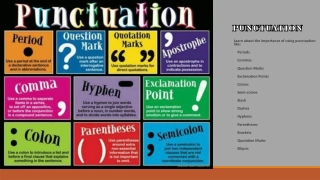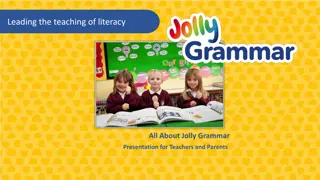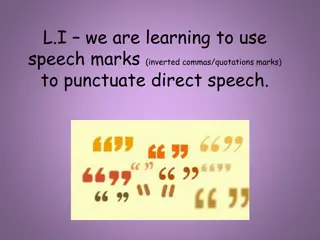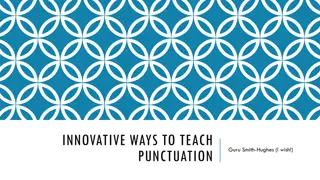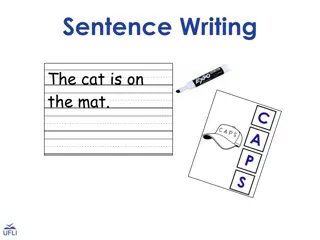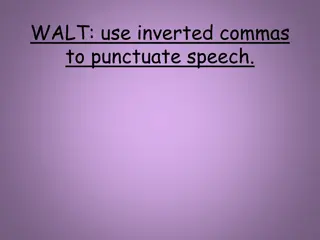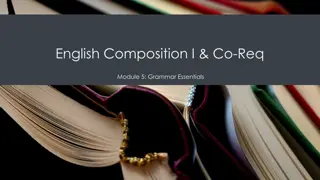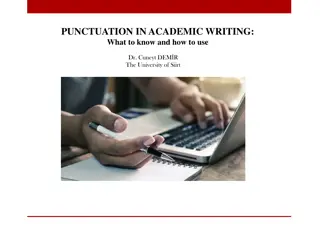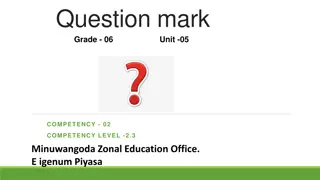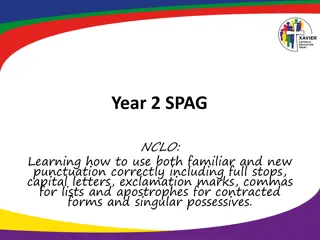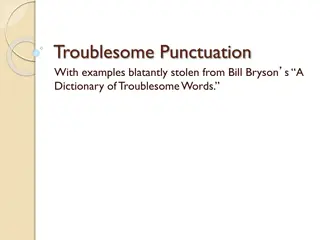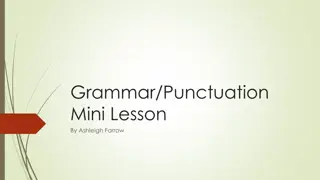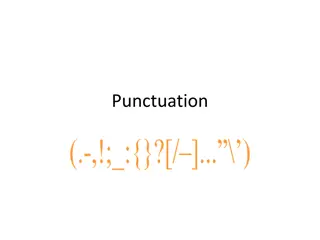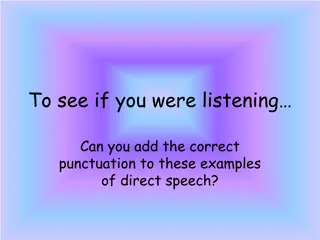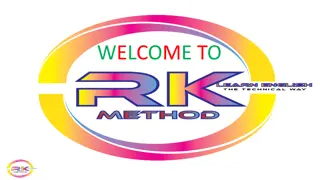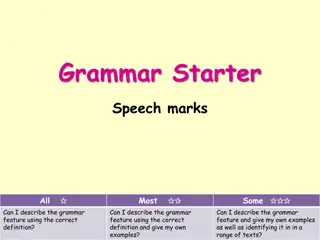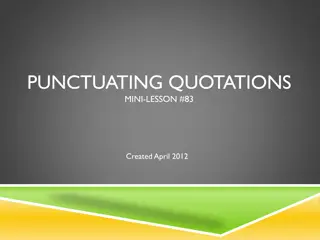Learn Punctuation Marks and Capitals in English Grammar
In this English lesson, students will learn about using capital letters at the beginning of sentences and for names, places, days, and months. They will also explore the 14 common punctuation marks, including periods, question marks, commas, and exclamation points, and understand their correct usage in writing. The lesson covers full stops, question marks, commas, and exclamation marks with examples for individual and group work.
Download Presentation

Please find below an Image/Link to download the presentation.
The content on the website is provided AS IS for your information and personal use only. It may not be sold, licensed, or shared on other websites without obtaining consent from the author. Download presentation by click this link. If you encounter any issues during the download, it is possible that the publisher has removed the file from their server.
E N D
Presentation Transcript
IDENTITY A.H.M.MOSTAFIZUR RAHMAN HEAD TEACHER UTTAR KRISHNAPUR GPS PHULBARI. DINAJPUR CLASS-5 SUBJECT: ENGLISH Unit-9 Lesson 5-6,page-37, Unit-10(p-41) U-12 ( p-49) U-14(p-57)
LEARNING OUTCOME Students will be able to- 7.1.1 recognizes punctuation marks and read accordingly
HEADING PUNCTUATION MARK & CAPITALS
CAPITAL LETTERS We use capital letters..... At the beginning of every sentence For names of people, places, days and months INDIVIDUAL WORK Give the examples with individual
PUNCTUATION There are 14 punctuation marks that are commonly used in English grammar. They are the period, question mark, exclamation point, comma, semicolon, colon, dash, hyphen, parentheses, brackets, braces, apostrophe, quotation marks, and ellipsis. Following their correct usage will make your writing easier to read and more appealing.
FULL STOP ( . ) We use a full stop ( . ) At the end of a sentence that..... Tells something Gives a command Makes a statement PAIR WORK Give the examples with pair
QUESTION MARK ( ? ) We use question mark ( ? ) at the end of a sentence that...... Ask for information GROUP WORK Give the examples with group
COMMA We use commas ( , )----- To separate three or more words in a list. Such as- Mili, Nayan and Saleh are my friends. They are kind, polite and caring. To separate words that introduces a sentence. Such as- Well, how are you? Oh, I am fine. Yes, I know Laila. No, I don t know Yousuf. To separate the name of a person addressed in sentence. Tamim, listen to this song. Neel, can you please turn on radio?
EXCLAMATION MARK ( ! ) We use exclamation marks..... To show strong feelings. That s great! Thank you so much! To show surprise. Such as Wow! Oh! After strong commands. Stop that! Don t touch that!
QUOTATION MARK ( ) We use quotation marks to show what someone said. We put quotation marks at the beginning and the end of the person s words. Use a comma before or after quotation marks. Start the first word inside the quotation marks with a capital letter. The hare said. I am the fastest animal. I am the slowest animal, said the tortoise.
EVALUATION Answer the following question . a) Where we use exclamation mark? b) Where we use full stop? Write three examples. c) Draw the following punctuation mark comma, full stop, question mark, exclamation mark, quotation mark,
HOME WORK Put punctuation mark following the passage The hare said I am the fastest animal I am the slowest animal said the tortoise.


